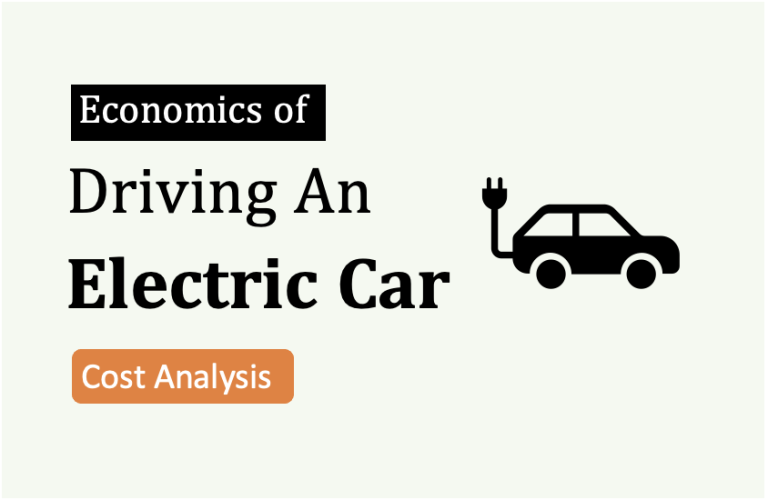Why we must know about prepaid forex card? Because it is a nice way to carry money abroad.
In India, it is also called as “Travel Currency Card”.
Planning one’s purchases before traveling abroad, is one of the aspects of personal finance management.
Consider this, you are an Indian living in New Delhi.
You have decided to go to CP on a buying spree.
What you will do as a preparation?
- Check Cash in your money wallet.
- Check Card in your money wallet.
If there is less cash, you will stop and ATM to withdraw cash.
In your wallet, you will have two types of cards:
- Debit Card &
- Credit Card.
So, ensuring cash and card will be sufficient to help you in your purchasing ordeal locally.
But the same checks will work while traveling abroad? Lets read more…
Traveling Abroad
Now suppose, instead of CP, you have to go to Paris.
Same preparations will work? Not really.
Cash: Indian Rupee will not work in France. You will need Euro.
Card: Though international cards (credit and debit) works abroad, but it is not advisable to use them on foreign trips.
Why?
The reason will be, to avoid worrying about fluctuating currency rates.
Indian debit/credit card one is carrying is meant for INR based transactions.
But in Paris, Euro will be charged.
Hence, if someone use INR card in Paris, additional INR to Euro conversion charges (1-2%) must be born by the cardholder.
Moreover, as foreign exchange rates vary every day, hence the same $100 spent on different days will cost the cardholder differently.
Sometimes it may work in favour of the cardholder and other times against.
In case of Forex Cards, the cardholder will be charged the INR to Euro conversion charges only once. When?
On the date of Forex Card loading.
Suppose, on the date of loading, Euro/INR exchange rate was Rs.81.
The cardholder will load the Forex card at this rate.
During his travel, suppose the Euro/INR rate shoots up to Rs.82.
This rate increase will not affect the cardholder, as the Euro has already been loaded on the forex card @Rs.81/Euro.
Other Reasons:
Other reasons for not using Indian Credit/Debit cards abroad are as below:
- Not safe, as these cards are often linked to one’s bank account.
- Extra cost for usage abroad:
- Service Charge (0-3% per usage).
- ATM Charge (0-Rs.500 per usage).
- Currency Conversion Charge (INR to say USD/Euro).
- Extra cost related only to credit card:
- High interest rate of ~3% per month on outstanding balance.
The “high interest rates” will be applicable only if the credit card bill is not cleared fully within the credit free period.
In short, the traveller will have to do a lot of mental math.
If he/she is using an Indian credit/debit cards abroad, there will be less peace of mind.
For peace of mind, one must opt for prepaid forex cards.
“Load it, shut it, and forget it”. 🙂
It’s the best way to carry money abroad.
#1. How to carry money abroad?
Now we know that Prepaid Forex Cards are a better product to carry money abroad.
So is it ok to travel to foreign destination only with a Forex Card in wallet? No.
One must carry some cash as well.
Suppose one has a budget to spend Euro.2,500 in Paris.
The distribution of funds between Cash and Card can be as below:
- Cash (25%) – Euro.650
- Prepaid Forex Card (75%) – Euro.1,850
Keeping some cash is always better.
Where one may need cash?
- Coffee/Snacking at Airport.
- Smaller Purchases at market place.
- Short distance cab service.
- Metro or Bus service may demand cash only.
- Small restaurants may also prefer Cash.
On a foreign soil, carrying lot of cash may be called risky, but no-cash is even riskier.
One must always keep oneself sufficiently liquid with cash.
This is particularly important when one is travelling to downtowns.
In the main city, shopping malls etc, the prepaid forex cards will work as good as Cash.
#2. How to load money in Prepaid Forex Card?
For the first timer, the procedure will be like this:
- Visit the bank.
- Forex Card Application Form – Fill it.
- Document Submission:
- Passport Copy.
- Visa Copy.
- Airline Ticket.
- Identity Proof (Pan/Aadhaar).
- Pay to bank the equivalent amount that must be loaded in Forex Card.
#2.1 How much to pay?
Suppose one wants to load Euro.2,500 in the Forex Card.
On that day, the foreign exchange rate in Forex Market is showing:
1 Euro = 80.786 INR.
But your bank will charge you slightly more than Rs.80.786.
Suppose they charge Rs.81/Euro.
On top of this they will also charge a lump-sum of Rs.200-300 on account of issuance fees.
So what we have here:
- Rs.81/Euro Exchange Rate.
- Rs.354 (300 + 18% GST) Lump-sum as issuance Fee.
So to load Euro.2,500 in ones Prepaid Forex Card one must pay:
Rs.81 x 2500 + 354 = Rs.2,02,854.
Once the prepaid forex card is loaded with cash, it can be used in foreign soil for purchases etc.
[P.Note: Almost same rates will be applicable to convert INR into Cash Euro].
#2.2 Limitation on Maximum Amount
The maximum amount that can be loaded in Prepaid Forex Cards are as below:
- Personal Travel: $10,000 USD (approx. Rs.6,75,000 per year).
- Business Travel: $25,000 USD (approx. Rs.17,00,000 per year).
- Study Travel: $100,000 USD (approx. Rs.68,00,000 per year).
- Medical Travel: $100,000 USD (approx. Rs.68,00,000 per year).
#2.3 Multi Currency Forex Card
A prepaid card can be used for multiple currencies.
Suppose one is travelling to Europe and USA.
In such a case, both Euro and US Dollar can be loaded in the multi-currency forex card.
The advantage of doing this is that, currency conversion charge (say from Euro to USD) can be saved.
#3 How to reload the Forex Card?
Yes, this situation can also arise.
Suppose one is at Paris and his/her Forex Card runs out of money.
What can be done?
The cardholder must reload the Forex Card.
How to do it?
Easy Way:
If the issued Forex Card is linked to one’s online banking account, one can load money online.
The loading from ones saving account to Forex Card, online, can be done from anywhere in the world.
Difficult Way:
In case the Forex Card is not linked to one’s banking account, the procedure is not so seamless.
In this case there are two alternatives:
#3.1 Visit to Branch:
The cardholder will have to ask someone in India to visit the bank branch which issued the forex card.
The person must fill the Forex application form.
Pay the amount to be loaded (in INR).
#3.2 Contact Bank Branch by Email or Phone:
The traveller must keep the 24 hours helpline number handy.
In case of trouble, one can call this number for support.
A better alternative will be to to contact the Bank Branch by email or phone.
But this facility may not be available for all account holders.
The cardholder must enquire about this facility at the time of Forex Card issuance.
#4 Returning Prepaid Forex Card
After returning to India, if the Forex Card is carrying some outstanding balance, better is to encash it.
Visit the branch and ask for the surrender procedure.
The bank will take steps to deactivate the issued Forex Card.
The outstanding foreign currency will be converted back to INR and same will be credit to ones bank account.
In case one wants cash, banks can honour the same on request.
Frequently Asked Questions
There’s actually a bit of a misconception here. There isn’t really a separate “Forex Debit Card.” Here’s the key difference: (1) Regular Debit Card: This is your everyday debit card connected to your Indian bank account. You can use it abroad, but the exchange rate might fluctuate, and there can be fees for using it outside India. (2) Forex Prepaid Card: This is a travel card specifically designed for foreign transactions. Think of it like a prepaid phone, but for currency. You load it up with a specific amount in the currency of your destination country (like USD for the US) at a fixed exchange rate. This way, you avoid surprise fees and currency fluctuations. So, Forex Prepaid Cards are a type of card designed for travelers, while a regular Debit Card can be used abroad but might not be the most cost-effective option.
A Forex Card, also called a travel card, is basically a prepaid card loaded with foreign currency. It’s like a super convenient way to manage your money abroad, especially in comparison to cash. Here’s the breakdown: (1) Prepaid: Imagine it like a phone with a set amount of talk time. You load the card with the amount of foreign currency (Euros, Dollars, etc.) you expect to spend on your trip. (2) Foreign Currency: Unlike your Rupee debit card, this card holds the currency of the country you’re visiting. (3) Safe and Convenient: No need to carry wads of cash! Use it for swiping at shops and restaurants, or even withdraw local currency from ATMs. Think of it as a secure and budget-friendly way to pay abroad, with the exchange rate locked in when you load the card.



